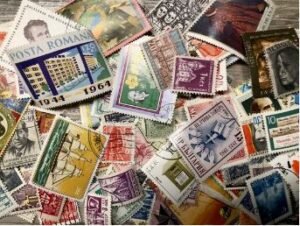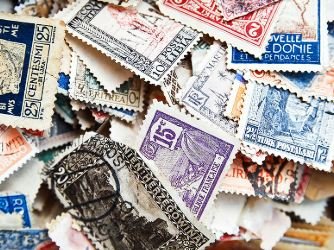Stamp collecting is a hobby that has intrigued enthusiasts for centuries. Some stamps are worth only a few cents, while others can fetch millions at auction. So, what makes a stamp rare or valuable? Understanding this question is essential for anyone interested in philately, as various factors contribute to a stamp’s rarity and worth. In this article, we will explore the key elements that define what makes a stamp rare or valuable, helping you become more knowledgeable about the world of stamp collecting.

8 major Factors in What Makes a Stamp Rare or Valuable?
1. Rarity
At the core of what makes a stamp rare or valuable is rarity itself. A stamp’s rarity is determined by how many copies were originally printed and how many are still in existence. If a stamp was printed in limited numbers or withdrawn from circulation early, it is likely to be rare and valuable. The fewer the number of copies available, the more sought-after the stamp becomes by collectors.
Additionally, certain stamps may be considered rare due to printing errors or unique features. For example, stamps with design flaws, such as misprints or incorrect colors, tend to be much rarer and more valuable than perfectly printed ones. The rarity factor plays a fundamental role in determining what makes a stamp rare or valuable.
2. Historical Significance and What Makes a Stamp Rare or Valuable
Another important factor that makes a stamp rare or valuable is historical significance. Stamps often commemorate important events, figures, or milestones in history. Stamps issued to mark the centennial of a nation, the birth of a famous personality, or the anniversary of an important event can carry significant historical value. When a stamp has a strong connection to a key historical moment, it can increase in rarity and value.
For example, the Penny Black, the world’s first postage stamp, holds immense historical value. Its association with the origins of the postal system and its rare status among collectors make it one of the most valuable stamps in the world. This highlights how historical importance plays a significant role in what makes a stamp rare or valuable.
3. Condition and Quality: What Makes a Stamp Rare or Valuable
When considering what makes a stamp rare or valuable, one cannot overlook the importance of condition. The quality of a stamp significantly impacts its market value. Stamps that are well-preserved, free from damage, and in pristine condition are far more valuable than those with creases, tears, or discoloration.

The condition of a stamp is judged by several factors, including its centering (how well the design is positioned), perforations (the tiny holes along the edges), and overall appearance. Stamps with perfect centering and intact perforations are especially desirable and valuable. Thus, the condition of a stamp is a crucial element in what makes a stamp rare or valuable.
4. Printing Errors: Unique Features that Increase Value
One of the most fascinating aspects of what makes a stamp rare or valuable is printing errors. These errors occur when something goes wrong during the printing process, resulting in a stamp with a unique flaw. Some of the most valuable stamps in the world are worth a small fortune because of their printing errors. A slight mistake, such as an upside-down design, an incorrect color, or a misaligned perforation, can dramatically increase a stamp’s rarity and desirability among collectors.
For example, the Inverted Jenny, a famous U.S. stamp from 1918, was printed with an upside-down image of an airplane. Only 100 stamps with this error were issued, making it highly sought after and valuable. Printing errors are a major reason for what makes a stamp rare or valuable, as they add an element of uniqueness and historical intrigue to the stamp.
5. Age: Older Stamps Are Often More Valuable
Age is another important factor in what makes a stamp rare or valuable. Older stamps, especially those that are no longer in circulation, are often much more valuable than newer stamps. Over time, stamps that have been withdrawn or discontinued become rarer as the number of surviving examples dwindles.
For example, the Black Mauritius stamp, issued in the 19th century by the island nation of Mauritius, is one of the oldest and most valuable stamps in the world. Its age, combined with its rarity, significantly contributes to what makes a stamp rare or valuable.
6. Demand: Popularity Can Drive Value
What makes a stamp rare or valuable is not solely based on physical characteristics. Market demand plays a significant role in determining the value of a stamp. Even if a stamp is rare, if there is little interest in it, its value may not increase. However, stamps that are highly sought after by collectors or investors can see their value rise considerably.
Some stamps may be popular due to the specific designs or famous figures they feature. For example, stamps featuring famous personalities or rare commemorative issues tend to be in high demand, which drives up their value. Thus, demand is a key factor in what makes a stamp rare or valuable.

7. Provenance: The History Behind a Stamp’s Ownership
Provenance, or the history of a stamp’s ownership, can also influence what makes a stamp rare or valuable. A stamp that has been part of a famous collection or has belonged to a notable collector often commands higher prices due to its unique history. Documented provenance can add a layer of intrigue and prestige to a stamp, which enhances its desirability.
For instance, stamps that were once owned by famous philatelists or that have been part of important collections can be more valuable because of their documented history. This makes provenance an important consideration when determining what makes a stamp rare or valuable.
8. Limited Editions
Some stamps are issued in limited editions, making them particularly rare and valuable. Limited-edition stamps are often produced to commemorate special occasions or significant events. These stamps are printed in small quantities, ensuring that their availability is scarce, which increases their value. Limited editions can include stamps with special designs, colors, or features that set them apart from regular issues.
Collectors often seek out these stamps for their rarity and the fact that they represent a unique aspect of a country’s postal history. Limited-edition stamps are frequently highly sought after, contributing to what makes a stamp rare or valuable.

Conclusion
In summary, many factors contribute to what makes a stamp rare or valuable. Rarity, historical significance, condition, printing errors, age, demand, provenance, and limited editions all play a crucial role in determining the worth of a stamp. Whether you’re a seasoned collector or just starting, understanding these factors will help you appreciate the intricacies of stamp collecting and guide you in identifying rare and valuable stamps. By examining these characteristics, you can begin to answer the question: What makes a stamp rare or valuable?




